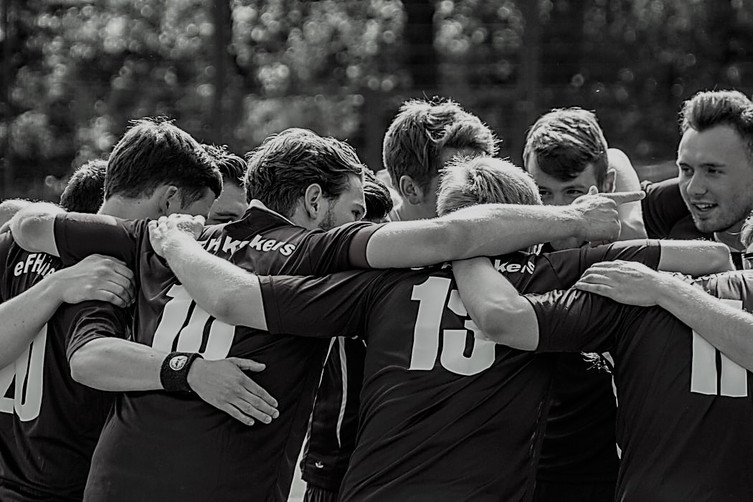Team Development: Before you kick off…
If you have been following the European Football Championships this summer, you probably noticed that both coaches, players, and commentators have focused and talked a lot about “the strong team”. Teams have received a great deal of attention and there is a good reason for this. Selecting the best team and making it function has pretty much always shown to be a huge competitive advantage.

Article by Jørn Møller
After centuries with a lot of focus on the individual and the individual’s performance, it is clear that collaboration and team spirit once again are the main focus – both in the world of sports and to a large extent also in the world of business. What benefits the team pretty much always benefits the individual – but what benefits the individual does not necessarily always benefit the team.
At A&D Resources, we use a specific approach when working with teams and even though we can’t always define the whole development journey beforehand, we know where it is beneficial to start – namely to understand and create awareness around the team dynamics that both positively and negatively affects the team. The dynamics are the sum of the different personalities, which are present in the team, and how these different personalities play along. The whole meaning is to understand the team’s natural preferences, strengths, challenges, and how they affect the journey the team is on.
To uncover this, we use Hogan Assessments, which provides us with the ability to understand the individual’s roles, but also the total dynamics of the team – and its bright side, dark side, and inside. Understanding the dynamic landscape is the first step in the development journey. But, before the development journey can begin, there are some prerequisites that preferably should be in place in order to create development and not just activity.
These prerequisites include:
1. The ”right” people on the bus – and the “wrong” off
It is important that the leader has set his/her team and believes in the people he/she has chosen for the team. If this is not in place, it would not be wise to start a development journey as there will not be the required psychological safety in place, which is essential in order to create a stronger team. Instead, it would revolve around setting the team – and focusing on the development of the team at a later point. There is a difference in team development and team assessment, and you should preferably not mix these.
2. People in the right seats
It is important that all members of the team understand both their own and their colleagues’ functional roles and areas of responsibility. If this is not in place, it will often disrupt the work with the team’s dynamics, and the development process will not be optimal.
3. 100% manager ownership and buy-in
It is essential that the team leader takes ownership of the development journey and WANTS to create the strongest team possible. It is as important that he/she communicates this to the team. It would be fine and a good idea if, for example, HR has co-ownership, but it is rarely effective if HR has primary ownership.
4. No dysfunctionality
If the team is dysfunctional, it is never a good idea to start a development journey that revolves around creating a deeper understanding of one’s role and the dynamics of the team. Mistrust is an indicator of a dysfunctional team. Mistrust in a team is almost always active which means that mistrust lives in the team, and something has happened within the team to undermine the trust among the members – the team has gone from a level of trust to active mistrust. It is not necessary to have 100% trust in everyone (which very few teams have), but it is necessary to have enough trust to complete the mission you are on. In short: If you sense or experience distrust within the team, then take a step back from the development journey, and instead start examining why there is distrust within the team. It is not impossible to turn a distrustful team into a team that trusts each other - but it is difficult. And you should think carefully about the methods you apply in order to do this.
If the described four prerequisites are in place, it would be the optimal starting point for a healthy and positive development journey, which can develop teams to being both coherent, resilient, and to balance “getting along” with “getting ahead”.
Enjoy the team journey and for more information please contact jm@adresources.com
Jørn Møller
Senior Consultant
A&D Resources